The Mosaics of Heraclea Lynkestis
I visited Heraclea Lynkestis while in Bitola in North Macedonia and was quite impressed by it – in particular, the mosaics. Below is some more information on the mosaics – all the information is courtesy a very helpful gentleman, the in-charge of the architectural site who gave us an impromptu lecture on the site. I have also educated myself on this through some writings (displayed at the site) of a person named Peco Srbinovski.
Heraclea is the capital of the region of Lynkestidos in North Macedonia. It was one of the most important towns during the early days of the Roman empire. It was founded by King Philip II (the father of Alexander the Great) in the mid-4th century BC. The reason for its importance was the fact that it lay along one of the ancient trade routes of Rome, the Via Egnatia.
Given the influences of the trade route, the town was exposed to the western and eastern provinces of the Roman Empire and was hence quite cosmopolitan for the times. The extensive archaeological exploration of the region has now brought out the story of the development in the Hellenic, Roman and early Christian era.
The floor mosaics found here seemed quite interesting to me in terms of thought and symbolism. They are from the late antique period, though there are some indications that they are older – Hellenic and classical Roman mosaics.
The mosaics can be classified into two groups basis the technique of mosaics used:
- The late Roman period
- The early Christian period
In the late Roman mosaics, the motifs are geometrical or figural, close to the classical Roman mosaics. These are dated around the 4th century. The early Christian mosaics, have geometrical motifs like the cocks, diamond cross, intersecting circles.
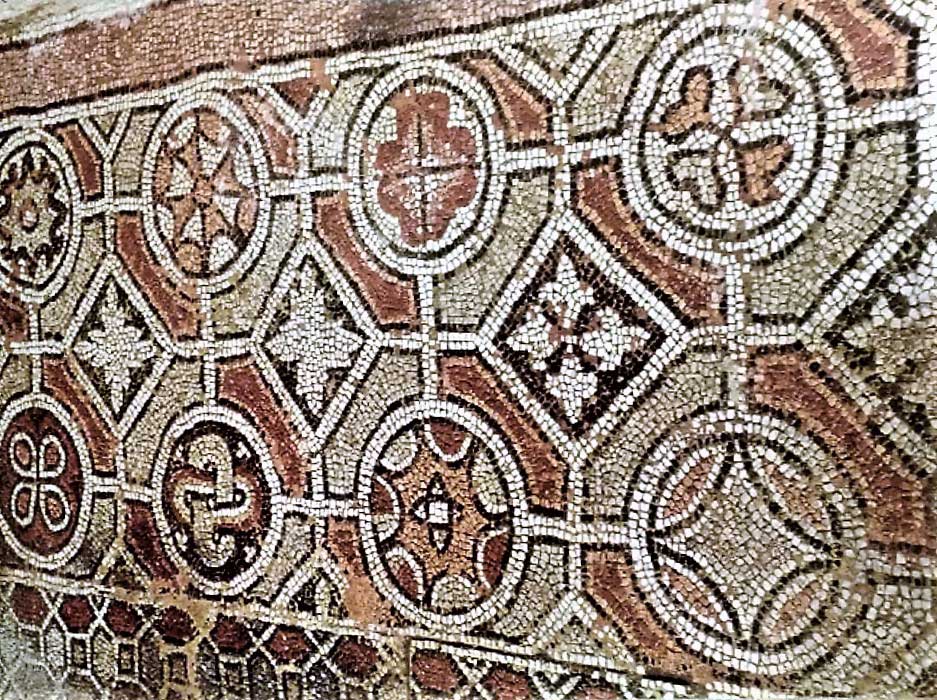
Some of the most interesting are the early Christian mosaics with figural symbolic representations that reflect a combination of Hellenic, Roman and new Christian art and literature. Added to these are the Roman, Syrian and Alexandrian influences in some.

Eucharistic and symbolic representations are many:
- The vine (symbolic of Christ) stemming out of the chalice (kantharos)
- Accompanied by a stag and hind (symbolic of the faithful)
- Peacocks (symbolic of immortality)
- Fountain with gushing water, stags, hinds and birds drinking from the spring of life
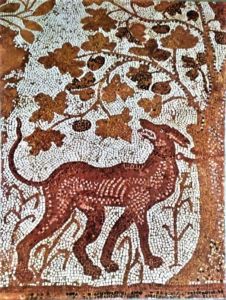 All these are essentially to exhort the faithful to follow Christ’s teachings. This is represented symbolically by hunting scenes or Christian paradise where lions and oxen coexist feeding on straw.
All these are essentially to exhort the faithful to follow Christ’s teachings. This is represented symbolically by hunting scenes or Christian paradise where lions and oxen coexist feeding on straw.
One of the floor friezes shows a representation of the mythical Cerberus, the Hound of Hades. This was supposed to be a multi-headed dog that guards the gates of the underworld to prevent the dead from leaving. The legend is fairly juicy – Cerberus was the progeny of the monsters Echidna and Typhon. He had 3 heads, a serpent for a tail and serpents protruding from various parts of his body. He was captured by Heracles (Hercules) – this was one of his 12 labours.
Another floor frieze is that of Capricorn, the 10th sign in the Zodiac, usually 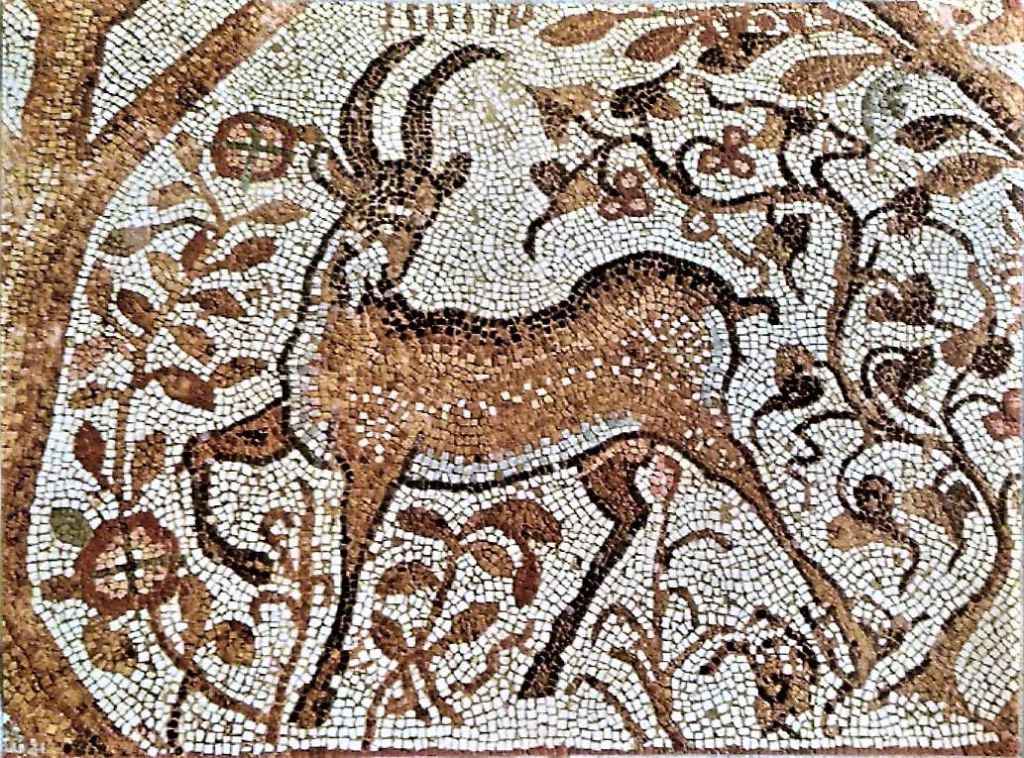 depicted as a goat. In Greek Mythology, he is the God Pan, who rules over the forests, woodlands, flocks and shepherds. He is usually depicted as goat waist down and waist-up, a man with the ears and horns of a goat. He had a bit of a glad-eye and is perennially trying to catch nymphs who typically are frightened of his appearance. He became the God of Nature eventually and some of his qualities of sexuality, love of nature, responsibility, patience, ambition and loyalty are assumed to be a part of the character of people born under this sign. Another story is that the goat-nymph Amalthea suckled Zeus as a baby who then, in gratitude, placed her among the stars as the constellation Capricorn.
depicted as a goat. In Greek Mythology, he is the God Pan, who rules over the forests, woodlands, flocks and shepherds. He is usually depicted as goat waist down and waist-up, a man with the ears and horns of a goat. He had a bit of a glad-eye and is perennially trying to catch nymphs who typically are frightened of his appearance. He became the God of Nature eventually and some of his qualities of sexuality, love of nature, responsibility, patience, ambition and loyalty are assumed to be a part of the character of people born under this sign. Another story is that the goat-nymph Amalthea suckled Zeus as a baby who then, in gratitude, placed her among the stars as the constellation Capricorn.
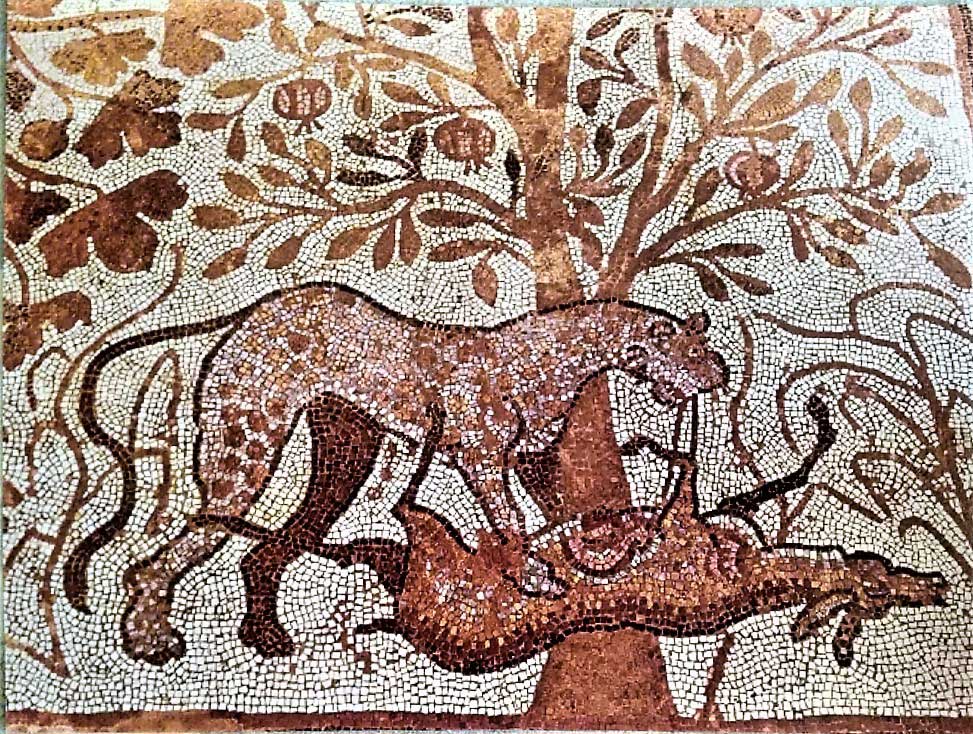
Among the other interesting mosaics are the hunting scene of a cheetah/ lion gorging on a fallen deer (guess the symbolism) and the two ducks on a lotus floor
The most important periods for mosaic development in Heraclea are in the 5th-6th century (the era of Justinian I). The artistic area that this style cluster seems to form (in terms of style and iconography) include Macedonia (Stobi & Lychnidos in Ohrid) and ancient Epirus (Nikopolis). They seem to suggest the new Byzantine style also – of course in its initial phase of development.

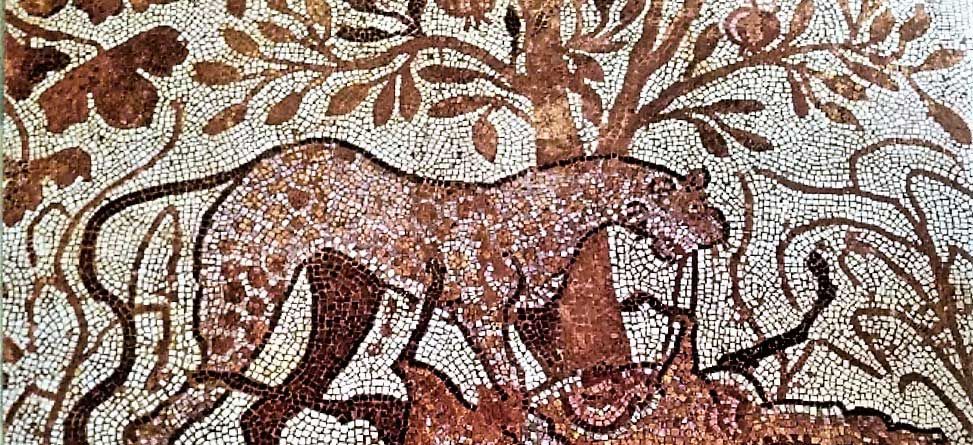
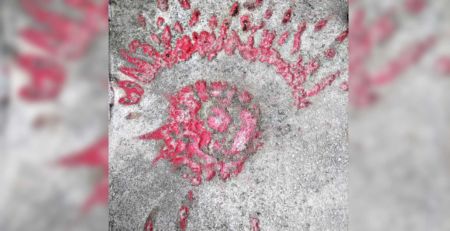

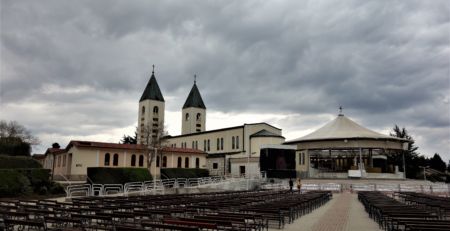

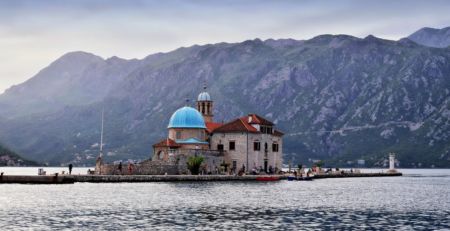
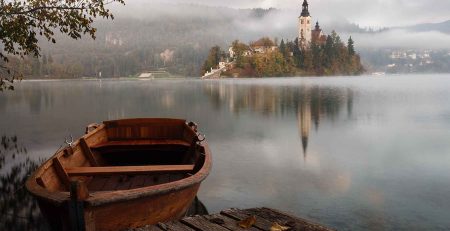
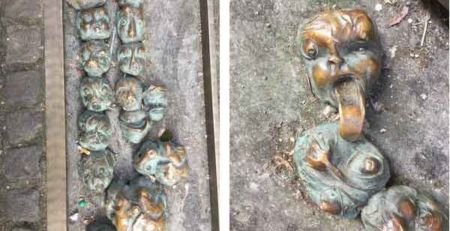
Leave a Reply